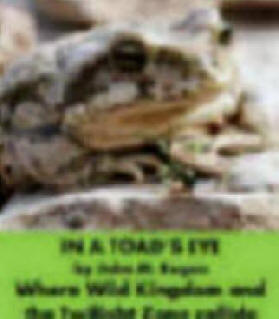
< >
Afghan Arabia Wild
WILDLIFE OF AFGHANISTAN WILDLIFE OF SAUDI ARABIA HOME
Saudi Arabian Wildlife Home Saudi Birds Saudi Mammals Saudi Reptiles Saudi Invertebrates Saudi Fossils
Camel Spiders
by John M. Regan
There is an incredible amount of
nonsense floating around about these arachnids, particularly on the internet.
I hope this page straightens out the garbage I see out there, most of which is
probably written by people who have never even seen a Camel Spider in the wild.
They are fascinating creatures and there is no need to make things up.
I've observed and photographed quite a few of these guys in the past couple of
years so let me lend some first hand observations.
First off let's straighten out the most common misconceptions about Camel Spiders:
1. Despite their name these guys are not spiders. Although they are arachnids they are classified under the order Solifugae and are more closely related to scorpions.
2. They are not anywhere near as large as the deceptive images and outright ridiculous calims floating around the net. The largest I have seen is the one picture to the left. It was about four inches from foreleg to rear abdomen. I read one blogger out there who claimed the "average size is eight inches although many are much larger." Garbage. Most would easily fit into the palm of your hand. (Although I don't recommend trying it!) That does not mean that larger ones aren't out there, but I can only vouch for what I've seen. The famous photo of a couple of GIs holding what appears to be a monster is a photographic trick accomplished by filming the Camel Spider well in the foreground of the picture.
3. They do not chase humans. I've never once had one attack me. What might be mistaken for an attack is an odd Camel Spider "dance," a behavior I've seen in a number of arachnids that probably a defensive behavior. When suddenly uncovered Camel Spiders lurch forward and backward, but not much more than an inch or so in either direction. They are just as likely to run for cover and try to hide. Now that does not mean that you won't get bitten if you foolishly decide to wave your finger a bit too closely in front of the animal. It may be that this belief derived from the habit of startled Camel Spiders attempting to get out of the hot sun by running for the nearest shade - the shadow of the human that disturbed them. The word Solofugid means "escaping from the sun."
4. Camel Spiders cannot outrun a human! This is about the most idiotic thing I've seen written about them. Several sites claim speeds of 20 mph. Ridiculous. I've read some authoritative sources clocking them at 10 miles per hour, but I doubt even this figure since the average man's walking pace is 3-4 mph.
Watch the camel spider dance: CLICK HERE
5. They are nowhere near as dangerous as some claim. Camel Spiders are non-venomous and although a bite from one is certainly painful (see photo below) and has the potential for infection, it is hardly lethal. They are not abnormally aggressive either. Camel Spiders I have encountered, when not doing their defensive posture, simply scrambled madly for cover.
Between Saudi Arabia and Afghanistan I have run into five distinct species which are pictured here. There are hundreds more but so far the ones pictured above and below are the types I've seen. The largest so far is easily the big guy in the upper left; about four inches from foreleg to the rear of the abdomen. The smallest is the half inch specimen I found in Saudi pictured in the bottom far right. Others range in size from the one inch juvenile specimen in the lower left picture and middle picture to the approximately two inch yellow camel spider on the right. Note the different placement of the eyes of the larger camel spider above compared to the ones below.
< >
Although there are similarities to spiders, the differences are obvious. The most striking and immediately noticeable are the eyes. Camel spiders have just two as opposed to the normal eight for spiders. Sources that I have read say they have several vestigial eyes as well, but I cannot verify that, despite some well magnified photos. Another not so obvious difference is the presence of five pairs of limbs for locomotion. The first pair, however, are called pedipalps and are primarily chemical/mechanical sense organs. Although the chelicera (fangs if you will) are similar to spiders, they are much larger and more developed in the Camel Spiders. If you have any doubt that these guys pack a powerful bite check out the photograph on the bottom left. The upper chelicera and the bottom part of the mouth is very evident and obviously powerful. A small lizard would be an easy prey species for these fellows, but their mainstay food is other invertebrates.
The three photos above show an interesting behavior of the solifugids that I have witnessed; one that is contrary to their reputation. When suddenly uncovered under a rock or protective covering Camel Spiders normally scramble to hide or exhibit their defensive dance. If they cannot find shady cover, and if they feel relatively safe, they will begin to dig a burrow using their limbs and very powerful jaws. The head on view of the middle photo shows the bulldozing action as gravel that was dug out by the forelimbs is pushed out of the way. They eyes look almost comical, don't they? It only took this one a minute or so to dig out a complete burrow for itself and disappear.
WILDLIFE OF AFGHANISTAN WILDLIFE OF SAUDI ARABIA HOME
Saudi Arabian Wildlife Home Saudi Birds Saudi Mammals Saudi Reptiles Saudi Invertebrates Saudi Fossils
< >